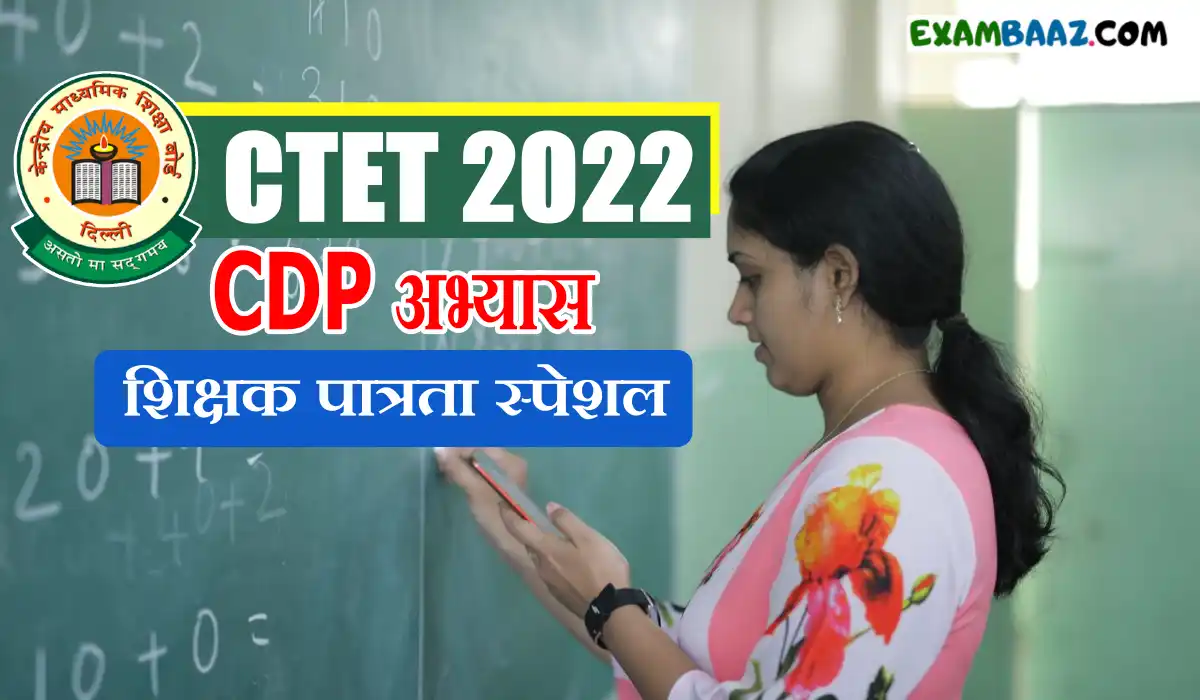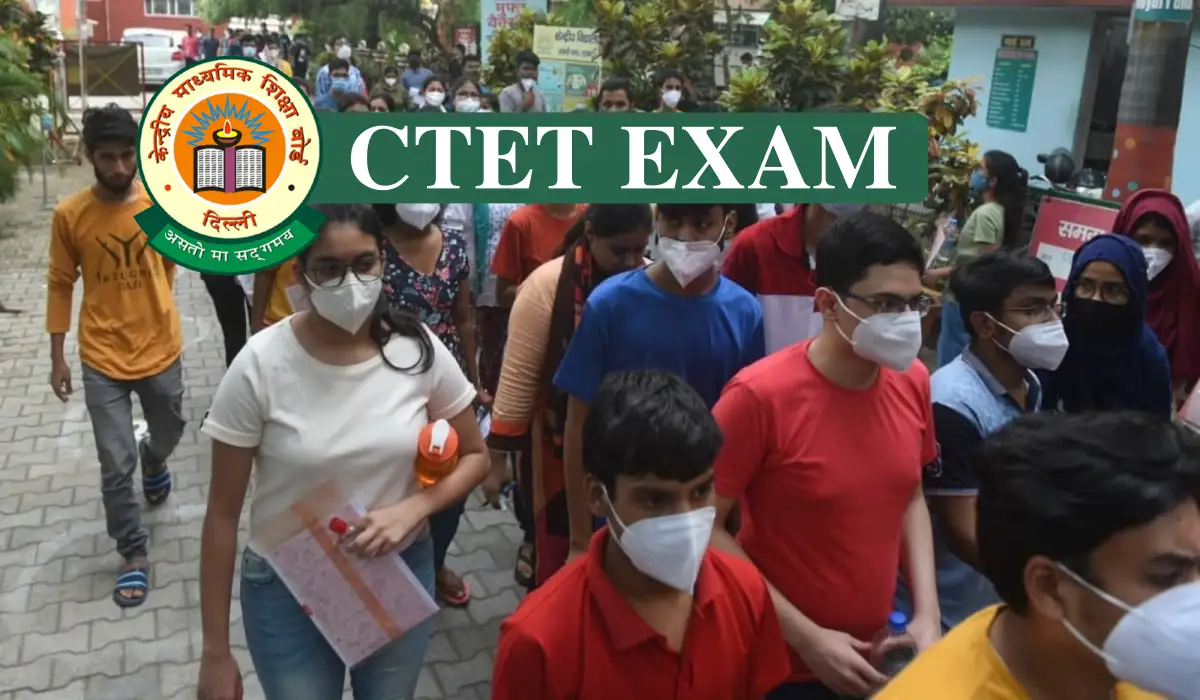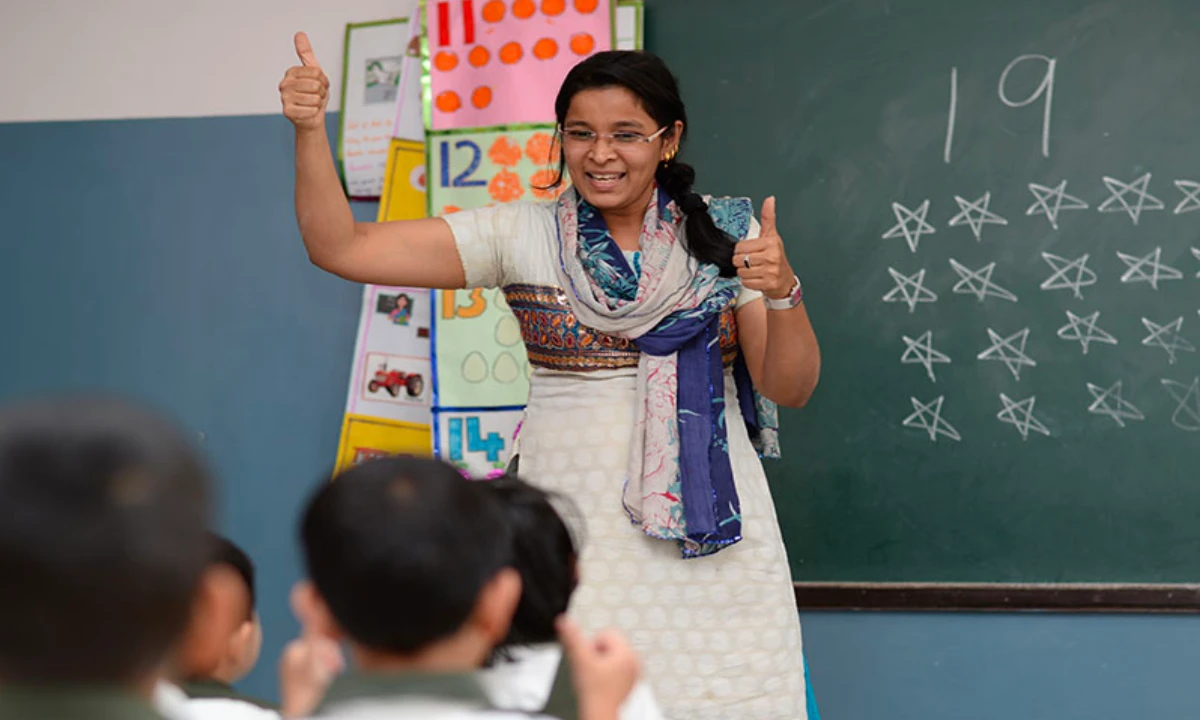
CTET Exam Child Development and Pedagogy Quiz: शिक्षक पात्रता परीक्षा के सत्र 2022 में शामिल होने वाले देश के ऐसे युवा जो शिक्षण के क्षेत्र में अपनी रुचि रखते हैं CTET के सोलवे संस्करण में शामिल होने के लिए अपनी तैयारियों में व्यस्त हैं ऐसे में यदि आपने भी एक परीक्षा में शामिल होने के लिए अपने रजिस्ट्रेशन करवाएं हैं तो पाठ्यक्रम को ध्यान में रखते हुए अपनी तैयारियों पर ध्यान केंद्रित करना बेहद आवश्यक है ताकि बेहतर अंकों के साथ सफलता हासिल की जा सके. बता दें कि सीटेट एग्जाम क्वालीफाई अभ्यर्थी केंद्रीय विद्यालयों में शिक्षक बनने के लिए पात्र होते हैं.
इस आर्टिकल में हम केंद्रीय शिक्षक पात्रता परीक्षा (CTET 2022) की तैयारी कर रहे अभ्यर्थियों के लिए (CTET Exam Child Development and Pedagogy Quiz) बाल विकास और शिक्षाशास्त्र की कुछ चुनिंदा प्रश्नों को लेकर आए हैं, जिनके अध्ययन से आप अपनी तैयारियों को परख सकते हैं.
केंद्रीय पात्रता परीक्षा में बेहतर अंक पाने के लिए, पढ़िए! बाल विकास शिक्षा शास्त्र के यह सवाल—CTET Exam Child Development and Pedagogy Quiz
1. विकास के कौन-से सिद्धांत के अनुसार गामक विकास शरीर के मध्य से शरीर के बाहरी सिरे की ओर होता है? Which principle of development states that motor development proceeds from the centre of the body towards the extremities?
1) शीर्षगामी / Cephalocaudal
2) अधोगामी / Proximodistal
3) प्रमस्तिष्कीय / Cerebral
4) परिधीय / Peripheral
Ans- 2
2. चार वर्ष की रिया को उसके माता-पिता से डांट पड़ती है जब वह सब्जियां खाने से इनकार करती है। प्रतीकात्मक खेल खेलते हुए, रिया इस व्यवहार का दोहराव अपनी गुड़िया पर करती है। उसका व्यवहार क्या दर्शाता है?
Rhea, a 4 year old girl got scolded by her parents when she refused to eat her vegetables. During make-believe play, Rhea repeats this behaviour. Her behaviour depicts –
1) प्राथमिक सामाजीकरण / Primary socialization
2) द्वितीयक सामाजीकरण / Secondary socialization
3) परिपक्वता / Maturation
4) आनुवांशिक क्रमादेशन को खोलना / Unfolding of genetic programming
Ans- 1
3. निम्न में से किस युग्म का मिलान सही है?
Which of the following is a correctly matched pair?
1) सृजनात्मकता – अभिसारी चिंतन / Creativity – Convergent thinking
2) पठन-वैकल्प / डिस्लेक्सिया – विषय पढ़ने में कठिनाई / Dyslexia – Difficulty in reading text
3) बौद्धिक स्तर – एक स्थायी व्यक्तिगत अभिलक्षण / Intelligence – A unitary trait
4) समावेश – विशिष्ट विद्यालयों में असमर्थ अधिगमकर्ताओ की शिक्षा / Inclusion education for learners with disability in special schools.
Ans- 2
4. राष्ट्रीय शिक्षा नीति (2020) यह प्रस्तावित करती है कि-
National Education Policy 2020 proposes that –
1) प्राथमिक कक्षाओं के बच्चों को उनकी घर की या स्थानीय भाषाओं में पढ़ाया जाना चाहिए। / children in primary grades should be taught in home / local languages.
2) प्राथमिक कक्षाओं में शिक्षा का माध्यम एक तरह की भाषा में ही उपयोग होना चाहिए। / there should be one uniform language of instruction in primary classes.
3) शिक्षकों को द्विभाषिक उपागम को प्रयोग करने के लिए हतोत्साहित किया जाना चाहिए। / teachers should be discouraged to use a bilingual approach.
4) बहुभाषावाद को बिल्कुल भी बढ़ावा नहीं देना चाहिए। / multilingualism should be heavily discouraged.
Ans- 1
5. एक संरचनावादी कक्षा में शिक्षक और छात्रों की क्या भूमिका होती है?
What is the role of teacher and students in constructivist classroom?
1) कक्षा में शिक्षक व छात्र दोनों निष्क्रिय होते हैं। / Both students and teachers are passive.
2) छात्र क्रियाशील होते हैं परन्तु शिक्षक निष्क्रिय होते हैं। / Students are active but teachers are passive.
3) शिक्षक और छात्र दोनों ही सक्रिय होते हैं। / Both teacher and students are active.
4) शिक्षक सक्रिय होते है, परन्तु छात्र निष्क्रिय होते हैं। / Teacher is active but students are passive.
Ans- 3
6. निम्न में से कौन सा क्रियाकलाप बच्चों के सीखने में उनके पूर्व ज्ञान का उपयोग नहीं करता है?
Which one of following activities is NOT effective for making use of the previous knowledge of children for learning?
1) रटना / Rote memorization
2 ) विचारावेश / Brainstorming
3) स्कीमा सक्रियता / Schema activation
4) संकल्पना मानचित्रण / Concept mapping
Ans- 1
7. गत्यात्मक और संज्ञानात्मक विकास ————— होता है।
Motor and cognitive development happens—————
1) बाल्यावस्था तक / Till the period of childhood.
2) किशोरावस्था तक / Till the period of Adolescence
3) वयस्कता तक / Till the period of adulthood.
4) सम्पूर्ण जीवनकाल के दौरान / Throughout the lifespan.
Ans- 4
8. किसी समस्या के समाधान तक पहुँचने के लिए मिलती-जुलती समस्याओं को उद्धृत करना क्या कहलाता है? Referring to similar problems to arrive at the solution for given problem is referred as:
1) अनुरूपता / analogy
2) निगमन – परीक्षण / hypothesis testing
3) स्मृति सहायक विधियां / mnemonics
4) सांधन – लक्ष्य विश्लेषण / means end analysis
Ans- 1
9. एक प्रगतिशील कक्षा में कौन सा विकल्प सार्थक अधिगम को बढ़ावा देने के लिए व्यक्तिगत अधिगम विधि का उदाहरण है?
An example of pedagogical strategy that would promote meaningful learning is –
1) निरंतर व्यक्तिगत प्रतियोगिताओं का आयोजन / regular individual competitions.
2) मौखिक दण्ड का प्रयोग / use of verbal punishment.
3) एकरूपी मानकीकृत पाठ्यचर्या / uniform rigidly structured curriculum.
4) केवल ‘अधिगम का मूल्यांकन के स्थान पर ‘अधिगम के लिए मूल्यांकन’ पर बल देना / focusing on ‘assessment for learning’ rather than only assessment of learning’.
Ans- 4
10. अधिगम की वह प्रक्रिया क्या कहलाती है जिसमें बच्चे स्कूल जैसी सामाजिक संस्थाओं में प्रवेश करके सीखते हैं?
————– refers to the learning that children undergo when they enter social institutions such as school.
1) परिपक्वता / Maturation
2) निष्क्रिय सामाजीकरण / Passive socialisation
3) प्रथामिक सामाजीकरण / Primary socialisation
4) द्वितीयक सामाजीकरण / Secondary socialisation
Ans- 4
11. एक शिक्षिका को बच्चों के अपने आप से बात करने (व्यक्तिगत वाक्) को क्या प्रतिक्रिया देनी चाहिए?
How should a teacher respond to young children talking out loud to themselves (self-talk ) ?
1) उसे हतोत्साहित करना चाहिए क्योंकि वह आत्मकेन्द्रीयता को बढ़ावा देता है। । Discourage it because it promotes Egocentrism.
2) उसे हतोत्साहित करना चाहिए क्योंकि इसके द्वारा बच्चा अपना खुद का ध्यान भंग करता है। / Discourage it because it is distracting for the child herself.
3) उसे प्रोत्साहित करना चाहिए क्योंकि इससे स्व-नियमन सुसाधित होता है। Encourage it because it facilitates self-regulation.
4) उसे प्रोत्साहित करना चाहिए क्योंकि इससे शिक्षिका की जिम्मेदारी ख़त्म हो जाती है। / Encourage it because this ends teacher’s responsibility.
Ans- 3
12. बैठने की व्यवस्था में लचीलापन, अधिगमकर्ताओं का समूह में कार्य करना किस कक्षा-कक्ष की विशेषताएं हैं? Flexible seating arrangement, learners working in groups, are characteristics of a-
1) व्यवहारवादी कक्षा-कक्ष / Behaviouristic classroom.
2) सामाजिक-संरचनावादी कक्षा कक्ष / Socio-constructivist classroom.
3) शिक्षक केन्द्रीय कक्षा-कक्ष / Teacher centric classroom.
4) पाठ्यपुस्तक केन्द्रीय कक्षा कक्ष / Textbook centric classroom.
Ans- 2
13. पूर्व संक्रियात्मक अवस्था के बच्चों के लिए शिक्षक को –
For children who are in pre-operational stage teachers should-
1) मूर्त संसाधनों व बहुत सी दृश्य-श्रव्य सामग्री का प्रयोग करना चाहिए। / use concrete props and a lot of audio visual materials.
2) जटिल पदानुक्रमित संबंधों को दिखाते हुए चित्रों का प्रयोग करना चाहिए। / depict hierarchical relationships through complex diagrams.
3) अमूर्त समस्याओं पर काम करने के लिए कहना चाहिए। / give abstract problems to work upon.
4) परिकल्पनात्मक सोच वाली समस्याओं के समाधान के अवसर उपलब्ध कराने चाहिए। / give opportunities to solve problems that require hypothetical thinking.
Ans- 1
14. एक समावेशी कक्षा में
In an inclusive classroom:
1) विशेष आवश्यकताओं वाले छात्र से अपेक्षा की जाती है कि सभी के लिए उपयोग होने वाले साधारण पाठ्यक्रम को वे अपने अनुकूल बनाएं। / students with special needs are expected to adapt to the general curriculum that is followed for everyone. ।
2) विशेष आवश्यकताओं वाले छात्रों को मुख्यधारा शिक्षा के बाहर, उनके लिए विशेष रूप से तैयार की गई सामग्री द्वारा पढ़ाया जाता है। । students with special needs learn outside of the system of mainstream education with content designed separately for them.
3) विशेष आवश्यकताओं वाले छात्रों की शिक्षा का प्रयोजन एक विशेष शिक्षक के साथ एक अलग कक्षा-कक्ष में किया जाता है। / students with special needs are always placed separately in a special classroom along with a special educator.
4) विशेष आवश्यकताओं वाले छात्र को मुख्य प्रवाह शिक्षा धारा में पढ़ाया जाता है और प्रत्येक छात्र की पूर्ण भागीदारी के लिए सभी अवरोधों को हटाने की वचनबद्धता होती है।। students with special needs learn within the system of mainstream education and there is a commitment to remove all barriers for full participation of everyone.
Ans- 4
15. एक प्राथमिक शिक्षिका अपने छात्रों को सभी जानकारियों को कम से कम पाँच बार अपनी कापी में लिखने के लिए कहती है। शिक्षण की यह विधि –
A primary teacher asks her students to write all the information at least five times in their notebook. The technique would be –
1) अत्याधिक प्रभावकारी है क्योंकि पूर्वाभ्यास और पुनरावृति, विषयवस्तु के अर्थपूर्ण अधिगम में अत्यधिक सहायता करते हैं। highly effective since rehearsal and repetition helps significantly in meaningful learning of content.
2) प्रभावकारी है क्योंकि किसी भी जानकारी की पाँच बार से कम पुनरावृत्ति करने से तत्काल भूलने की संभावना रहती है। effective since repetition of any information less than five times leads to immediate forgetting.
3) प्रभावकारी नहीं है क्योंकि केवल पूर्वाभ्यास करना अर्थपूर्ण अधिगम की उपयुक्त तकनीक नहीं है। ineffective since more rehearsal is not a suitable technique for meaningful learning.
4) प्रभावकारी नहीं है क्योंकि पूर्वाभ्यास अर्थपूर्ण अधिगम की एक जटिल प्रक्रिया है। / ineffective since rehearsal is a complex method of meaningful learning.
Ans- 3
Read More:
CTET 2022-23: शिक्षक पात्रता परीक्षा में शामिल होने से पहले CDP के यह जरूरी सवाल जरूर पढ़कर जाएं
ऊपर दिए गए इस आर्टिकल में हमने केंद्रीय शिक्षक पात्रता परीक्षा में ‘बाल विकास शिक्षा शास्त्र’ से पूछे जाने वाले (CTET Exam Child Development and Pedagogy Quiz) महत्वपूर्ण सवालों का अध्ययन किया, सभी TET परीक्षाओ की नवीनतम जानकारी के लिए हमारे टेलीग्राम चैनल के सदस्य जरूर बने Join Link नीचे दी गई है।
| Follow Facebook – Click Here |
| Join us on Telegram – Click Here |
| Follow us on Twitter – Click Here |

